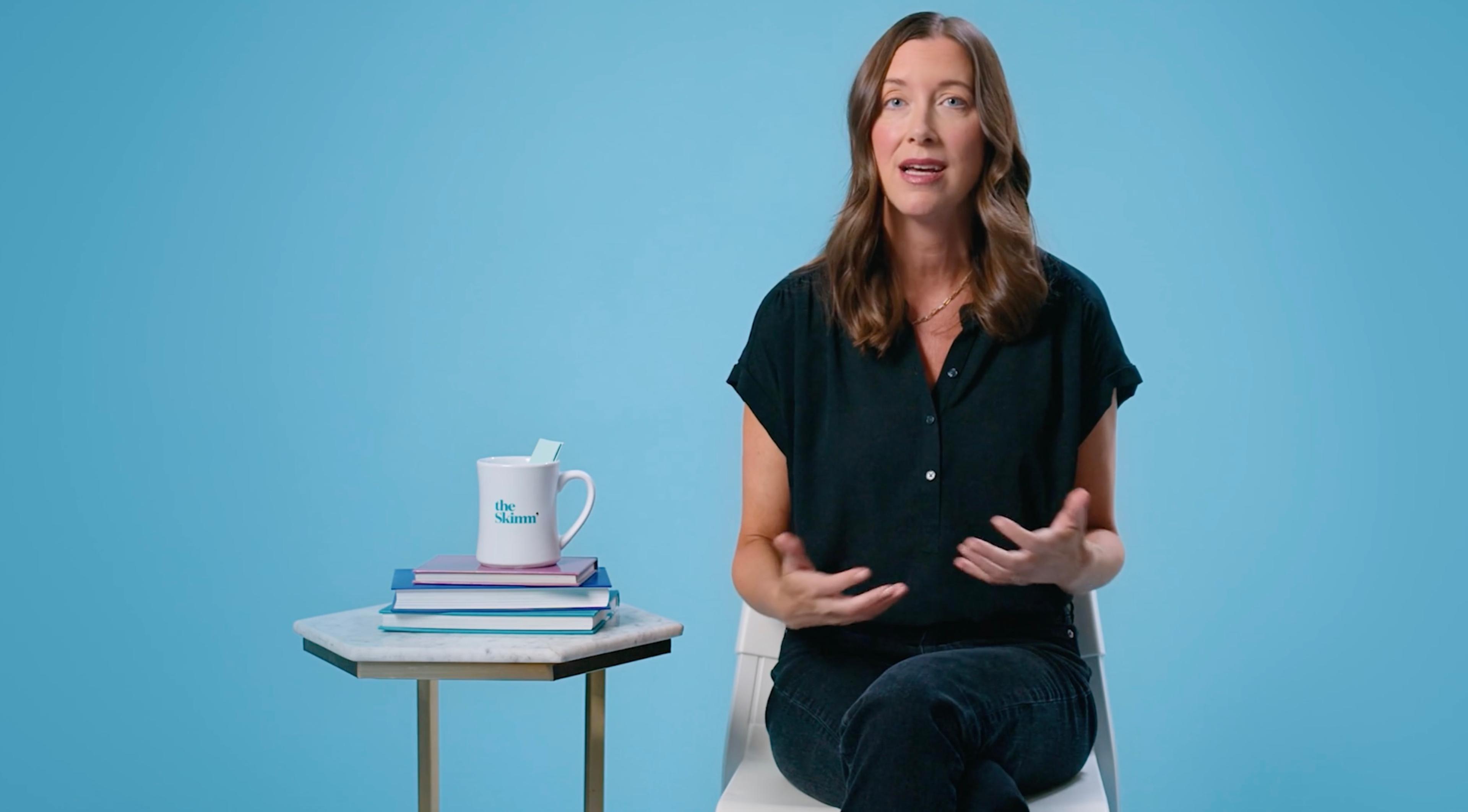

- FBT is the gold standard approach for treating eating disorders in young people.
- FBT is a structured treatment approach that progresses through three distinct phases, with the patient gradually gaining more independence.
- Parents or other caregivers play a central role in FBT. Knowing what to expect and having expert support makes the process easier.

Maris Degener is clear that her eating disorder recovery was in no way easy. That said, Equip’s Director of Peer Mentorship is also clear that the type of treatment she received—known as family-based treatment or FBT—was life-changing. “Treatment was still challenging, and at the time, I really didn’t want my family to intervene, or to recover at all,” she says. “But them stepping in, and stepping between myself and the eating disorder, made all the difference in my healing.”
FBT is widely considered the best approach for treating eating disorders in young people, thanks to a large body of research supporting its effectiveness. According to Equip Therapist Lead Ana Luz Gardner, MSW, the clear-cut structure of FBT makes it an empowering and effective protocol. “FBT has a clear three-phase system where the individual gradually gains independence over eating and plating their meals in an age appropriate manner,” Gardner says. “FBT allows and empowers carers to take charge of meals until the patient is ready and able to work towards more independence.”
For families choosing to pursue FBT, the path ahead can feel overwhelming, even if you know it’s the right choice and the straightest route to recovery. But often, knowing what to expect makes the journey feel more manageable, and can reduce uncertainty and anxiety for caregivers. Read on to learn more about FBT, its structure, and what happens during each of the three phases.
What is FBT?
Originally known as the Maudsley Method (because it was developed at London’s Maudsley Hospital), FBT is a treatment approach that empowers a patient’s family to take a central role in all aspects of their eating disorder recovery. Considered the gold standard for eating disorder treatment in children, adolescents, and young adults, FBT can be used to treat anorexia, bulimia, binge eating disorder (BED), and other specified feeding or eating disorder (OSFED). FBT can also be used to treat avoidant/restrictive food intake disorder (ARFID) in young people, although it is commonly paired with another form of treatment called cognitive behavioral therapy for ARFID (CBT-AR).
“FBT is a form of therapy for eating disorders focused on empowering the family to renourish their loved one and interrupt disordered eating behaviors,” Gardner says. She explains that this specific type of treatment differs from others in a few distinct ways:
- The family leads. “In FBT, the therapist takes a ‘consultative stance,’ highlighting that the carers are the experts on their child while the therapist is the expert on eating disorders,” Gardner says.
- It separates the patient from their eating disorder through externalization. “Externalization involves understanding that the eating disorder is a biologically-influenced external force that has taken control of the adolescent—not a reflection of the patient's character or a result of faulty parenting,” Gardner says. “Externalization reduces blame and allows the family and patient to focus on pushing the eating disorder out and eventually creating an identity without the eating disorder in their life.”
- It prioritizes addressing the present symptoms. “FBT takes a pragmatic approach, empowering carers to focus on the here and now, not on the cause of the eating disorder,” Gardner says. In fact, FBT is generally agnostic when it comes to the “reason” for the illness, believing that you don’t need to know what caused an eating disorder in order to treat it effectively.
“In its simplest form, FBT is based on the concept that support from others helps us stay on the path to recovery,” Degener says. “We task supports—often parents—with helping their loved one begin pursuing recovery. This usually means providing meals and ensuring they get eaten to help them physically renourish and heal. Over time, the supports begin to step back and provide more autonomy to their loved one as they make progress and begin to manage their recovery independently.”
Degener acknowledges that the unique structure of FBT can initially be disorienting. “It can feel really topsy-turvy to many,” Degener says. “Shouldn’t my loved one be self-motivated to get better? If they’re sick enough, won’t they see they need help and choose it for themselves? But FBT takes into account the unique nature of an eating disorder: often, folks struggling may not want to get better, or not recognize that they are ill. At the time my parents stepped in to support me, my eating disorder was making it impossible for me to recognize just how sick I was, or take the steps I needed to get better. Without their intervention and consistent support, it would have been immensely more difficult for me to make the decision that I needed help, and I needed to take swift action to protect my health and well-being.”
What to expect from FBT
Degener says her mom routinely tells a story of talking to a doctor about starting FBT. At the time, Degener was hospitalized. “The doctor asked her what she thought things would be like,” she says. “And my mom said, ‘It’s going to be hard.’ The doctor replied, ‘It’s going to be harder than you think.’”
Degener adds that many families are surprised by the level of involvement asked of them in FBT. “And in truth, it’s no small task to be responsible for meal planning, grocery shopping, preparing meals, and making sure your loved one eats all those meals until they achieve weight restoration,” she says. “Plus, families are often doing this while their child or loved one is feeling ambivalent about recovery—or, in my case, actively not wanting it. It’s worth saying: FBT is not easy, and recovery is not easy.”
At the same time, however, Degener emphasizes that recovery is worth it. “I look back now with immense gratitude for the effort, time, and energy my parents put into helping me fight back against the eating disorder before I felt ready to do so myself,” she says. “It wasn’t the health effects, or the huge impact on my life and relationships that pushed me to begin recovery. It was my parents stepping in and saying, ‘let us help you until you are ready and able to help yourself.’”
Here are a few key things caregivers can expect from FBT:
- An immense amount of caregiver participation. “FBT requires significant caregiver involvement,” Gardner says.. “Sometimes, caregivers need to take time off from work and other responsibilities to devote themselves to plating meals, monitoring their loved one, and providing full support.”
- An adjustment period. While FBT allows the patient to continue living at home and attending school, some families may find it helpful to take a brief break from everyday routines in order to get familiar with the protocol. “Taking your child out of school or taking a break from school may be necessary in the beginning of recovery,” Gardner says.
- An initial intense focus on interrupting disordered behaviors. “FBT seeks to stop eating disorder behaviors and keep those behaviors from being further entrenched into your loved ones life,” Gardner says. “It will take work, time, and stamina to outlast the eating disorder.”
- Forward movement in treatment, even if the patient is reluctant. “FBT also does not need buy-in from the patient,” Gardner says. “To the surprise of many carers, FBT treatment does not need the patient to agree or even want to do treatment. In fact, most patients can be resistant and not want to participate in treatment. Since carers are driving the change in the home, it is up to the carers to instill boundaries and determine meal times.”
The three phases of FBT: an overview
FBT not only differs from other forms of treatment in its inclusion of caregivers and family members, but in its structure. Instead of seeking out and discussing the root causes of the eating disorder, FBT is mainly focused on changing the behaviors, regardless of what initially triggered them. This approach is based, in part, on the understanding that a malnourished brain will not be able to effectively participate in therapy, and that it’s essential to loosen the grip of the eating disorder mind—by disrupting behaviors and normalizing eating habits—before any psychological or relational work can begin.
In practice, this means FBT progresses through three distinct phases:
- Full caregiver control: The focus is on reduction of symptoms and weight restoration (when needed).
- Gradual return of control to the child: The focus is on development of skills and independence.
- Establishing autonomy: The focus is on identity formation and relapse prevention.
“I find the structure of FBT to be motivating, as you can clearly define progress, and gaining independence can be a motivating and important factor throughout treatment,” Gardner says. “I love FBT because it pushes the eating disorder out and allows patients to relearn what their life could look like without an eating disorder.”
Phase one: full caregiver control
Phase one of FBT primarily focuses on restoring a young person’s physical health through the guidance and participation of their caregivers. Because those with eating disorders typically struggle with decisions around food, eating, and sometimes exercise, FBT temporarily puts the caregivers in charge of these choices. And because malnutrition can severely impact a patient’s ability to think clearly, phase one removes the decision-making burden and allows patients to simply follow predetermined steps toward physical recovery.
This means that caregivers take on the responsibility of deciding what, when, and how much their child eats, as well as monitoring food intake and helping the patient reduce physical activity as needed. This phase continues until there is steady weight gain and regular eating habits, and eating disorder symptoms begin to slightly improve.
“When I was hospitalized and first diagnosed with anorexia, my parents were given the lowdown on phase one,” Degener says. “My mom always described it as having a newborn again: you are now in charge of making sure your child eats enough, and regularly, and providing constant supervision throughout. But she also always says that the difference between caring for me and caring for a newborn was that this time, I—or, more accurately, the eating disorder—was fighting back. This was the most explosive period for us. Every meal came with tears, angry words, and sometimes even violence. This was the stage where we came face to face with the reality that eating disorders can truly cause us to act in ways we never would otherwise—even far outside of our true values.”
According to Gardner, phase one can be especially intimidating to families beginning their FBT journeys. “Phase one can feel daunting, intense and stressful,” Gardner says. “I often remind caregivers that this is a time that won’t last forever. But it’s a crucial time of breaking life-threatening cycles. It's okay to feel stressed during this phase. Find micro breaks and remember you are in the thick of the eating disorder. Expect pushback and difficulties—this is normal. When you hold boundaries compassionately and firmly, it can reroute the trajectory of your loved one’s health and life.”
Phase two: gradual return of control to the child
Throughout phase two, caregivers gradually give their loved one more responsibility over their eating. This phase typically moves steadily and slowly to avoid losing any progress. “Phase two is when the patient gradually receives some autonomy over their food,” Gardner says. “This is a time where caregivers and the FBT team are vigilant towards any eating disorder behaviors. This is also a special time where trust and ownership are built.”
As Degener can attest, the slow pace of phase two is critical to continued success. “I’ll be totally honest, we rushed this stage,” she says. “Simply put, I think we were all exhausted. The constant meal preparations, fights, long stand-offs at the dinner table, were all draining. And my parents struggled at times to see me appear so unhappy.”
Degener points out that this reaction from caregivers is typical and to be expected. “I remember talking to a parent who did FBT with their child who said this treatment can make you second guess yourself constantly, wondering, ‘are we doing the right thing here?’” she says. “So when the time came to practice more independence, I think we all leapt at the chance. But doing too much too quickly definitely resulted in my eating disorder calling the shots wherever it could—some meals definitely ended up in the trash at school.”
If she could redo any part of her FBT journey, Degener says phase two is where she and her parents would slow down the pace and move more intentionally. “If we could do it all over again, I’d take this process much more gradually, with more scaffolding in place to help me stand up to the eating disorder, when doing so alone was still remarkably challenging,” she says.
Phase three: establishing autonomy
The final phase of FBT typically focuses on reviewing progress and assessing where the patient is, developmentally. Throughout phase three, the patient and their family collaborate with the treatment team to develop long-term relapse prevention strategies and future goals. This is also the time when the patient is encouraged to explore their identity beyond the eating disorder and redevelop their sense of identity.
“Phase three is when age-appropriate autonomy over food is given back to the adolescent—what a wonderful time!” Gardner says. “Resilience and building a life without the eating disorder occurs here. Often this allows the individual to explore who they are without their eating disorder. Their identity can truly come alive. This gives the patient the opportunity to reconnect with a life that feels fuller and more aligned with their values.”
For Degener, phase three included establishing certain systems that now, in full recovery, don’t require much effort. “But they have made all the difference in creating a life that helps me resist the always-present influences of diet culture in our society,” she says. “Sometimes these are simple non-negotiables—I never skip breakfast, for example—and sometimes they’re practical habits, like always having snacks in my purse. And other times, this looks like doing things that support my all-around well-being, whether that's spending time with friends or on hobbies that bring me joy, or going to therapy to find support when I need it, even for non-eating-disorder specific topics.”
Because phase three is the time to focus on relapse prevention strategies, Gardner advises patients and caregivers to seek out simple tools and systems that can support continued recovery. “Using the green/yellow/red light metaphor has been helpful to many patients to identify which behaviors are positive (green), warning signs (yellow), or signs to seek immediate help and support (red),” she says.
How to get started with FBT
Because FBT hinges on caregiver involvement, many families may find it intimidating, but know that you don’t have to go it alone. In fact, it’s important to do it with the support of FBT-informed eating disorder specialists, and there is plenty of expert guidance available. At Equip, patients are matched with a dedicated team of eating disorder specialists who are deeply knowledgeable about FBT, and help families navigate all three phases with the resources, support, and information they need.
“It's completely normal to feel nervous—FBT can seem overwhelming at first,” Gardner says. “But for so many families, it's made a life-changing difference. Starting something new often brings uncertainty and questions, but this could be the step that helps save your loved one's life and support them in building a future free from an eating disorder.”
Degener says that a common fear many families have is that FBT will irreparably damage the parent-child relationship—but she found the experience actually solidified her family’s bond. “At the time, I couldn’t have hated it more—and yet today, I have nothing but gratitude for their willingness to step in and put action to the words many parents say: ‘I would do anything for my kid.’ Today, I feel that my relationship with my parents has strengthened throughout this process. Now, more than a decade later, we’re able to look back and even laugh about some moments of the experience—something we never would have thought would be possible at the time.”
“I’ve had families come back to me after going through FBT, and even though it was hard, they’ve said it was absolutely worth it,” Gardner says. “It helped their child recover and gave them hope again. Recovery is possible. You don’t have to feel ready or confident to start—just willing to try.”
If you are worried about a loved one with an eating disorder, schedule a call with an Equip team member to learn more about our FBT-informed approach.
- Grange, Daniel Le. 2005. “The Maudsley Family-Based Treatment for Adolescent Anorexia Nervosa.” World Psychiatry 4 (3): 142. https://pmc.ncbi.nlm.nih.gov/articles/PMC1414759/.
- Muhlheim, Lauren. 2018. When Your Teen Has an Eating Disorder : Practical Strategies to Help Your Teen Recover from Anorexia, Bulimia & Binge Eating. Oakland, Ca: New Harbinger Publications, Inc.







